- Administrator
- Albums and Singles
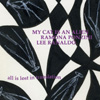 Sonic Youth and the Opalio Brothers both share a definite propensity towards ambitious and fruitful international collaborations, so it was pretty much inevitable that they'd wind up occasionally intermingling.  In fact, this live Verona performance is actually the second time that these four musicians have shared a stage, having previously performed with Dead C's Michael Morley in 2008 as part of a French art exhibition.  In theory, the combination of Ranaldo's tumultuous guitar noise, Ponzini's Japanese percussion, and Roberto Opalio's weird sci-fi toys has the potential to be something quite spectacular.  The reality is a bit less than that, but this album definitely has its share of compelling moments.
Sonic Youth and the Opalio Brothers both share a definite propensity towards ambitious and fruitful international collaborations, so it was pretty much inevitable that they'd wind up occasionally intermingling.  In fact, this live Verona performance is actually the second time that these four musicians have shared a stage, having previously performed with Dead C's Michael Morley in 2008 as part of a French art exhibition.  In theory, the combination of Ranaldo's tumultuous guitar noise, Ponzini's Japanese percussion, and Roberto Opalio's weird sci-fi toys has the potential to be something quite spectacular.  The reality is a bit less than that, but this album definitely has its share of compelling moments.
Ramona Ponzini is not as well-known as this session's other participants, but she has been working with the Opalio brothers for quite some time in projects like Black Magic Disco and plays a very prominent role in All is Lost in Translation.  The first of the two lengthy pieces is centered around her recitation (in Japanese, presumably) of some poetry by proto-feminist Yosano Akiko.  That doesn't start for about ten minutes though and the build-up to it is quite nice: a fragile guitar motif twinkles beneath an array of chimes, bells, echo-heavy voice recordings, and Roberto Opalio's wordless falsetto vocal swoops.  It all feels strangely sacred, like a recording of some bizarre cult, but it is charmingly disrupted from time to time by laser sounds and other futuristic noises from Roberto's eclectic assortment of toys and electronics.  Gradually, however,  the guitars and electronics get more and more pronounced and both Maurizio Opalio's cymbals and Ponzini's hand-percussion grow steadily more active as the piece builds to its slow-burning climax.
Unfortunately, the work is torpedoed a bit by some unfortunate irony, as Lee Ranaldo attempts to amp up the intensity with some of his own English-language poetry that is not lost in translation.  It seems like his words are intended to play off and enhance Ponzini's, but his incessant shouted variations of "kick me in the head!" definitely shatter the piece's mantric/ritualistic feel for me and turn the proceedings into something approaching avant-garde theater or performance art.  It's quite exasperating because everything else works so well, but I guess that is one of the perils of improvising: some ideas just don't work as well as others.  The piece nearly gets its momentum back when it dissolves into an electronic blizzard of burbles and whooshes, but then Ranaldo chimes in with an ill-timed "I didn't mean to kick you in the head–I was only trying to get elected," causing me to involuntarily grimace.  Then it derails yet again during the otherwise sublime chanted outro, as Lee begins loudly demanding to now be hit in the head.  I'd love to think that he is making some extremely clever point about the limitations of language or something that is way over my head, but my gut tells me otherwise.
The second and final song is a bit more cacophonous and rhythmic, as Ranaldo's guitar squalls, howls, and feeds back over an actual drum beat and some avian and insectoid electronic twittering.  After about five minutes, however, the louder elements drop out and Ramona returns to the microphone to intone some more poetry over woozy harmonics and a bed of layered moans.  Then, to my utter disbelief, Lee starts demanding to be kicked in the head yet again, only a bit more impassioned than he was earlier.  He also starts wildly yelping before the piece gently ebbs to a close with a steadily dwindling flurry of dissonant guitar noise and space-y electronics.
I can't describe All is Lost in Translation as anything other than inspired, but deeply frustrating: most of it is quite good, but the not-so-good parts tend to be the most prominent.  Ranaldo definitely had the right idea in a larger sense, as his vocal contributions brought some welcome passion and unpredictability to the performance, but the actual content did not serve the surrounding music particularly well.  There is definitely a lot to like but this album is probably too uneven to offer much appeal to anyone that is not already an existing fan of the parties involved.
Samples:
 
Read More
- Creaig Dunton
- Albums and Singles
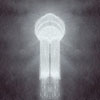 After recently loving the Sun Splitter cassette on Land of Decay, I had high hopes going into this split and they most certainly came through. Their half here stands up proudly with that tape, which is no easy feat, and the Bridesmaid side is no slouch either.
After recently loving the Sun Splitter cassette on Land of Decay, I had high hopes going into this split and they most certainly came through. Their half here stands up proudly with that tape, which is no easy feat, and the Bridesmaid side is no slouch either.
Bridesmaid, who I was notreally familiar with are definitely sailing similar waters to Sun Splitter, but still put their own unique spin on things."Vilkin' It For All It's Worth" is a fully instrumental piece that initially conjures up images of smoke and bong water, with its overdriven bass and garage band drums that are just the right amount of messy.It’s an unrelenting headbanging delight until the final 30 seconds or so, where it just goes full bore into grindcore assault, shattering the comfortable repetition that preceded it violently.
On the other side, "Plum Blossom" by Sun Splitter is cut from the same cloth as their tape.Opening with a robotic cymbal passage into their wonderfully diverse Sabbath riffs, the track is pure noisy bliss.While the song doesn’t quite transform into as many odd configurations as some of their other songs, it does carefully balance a repeated vocal mantra with big, caveman riffs and more complex guitar notes, dissolving into screams and noise in the middle segment.Subtlety is tossed out the window at the end, when the drum machine is programmed for "machine gun" and the guitar is pure death metal.
Paired together, they both highlight different aspects of the sludgy, post-doom metal scene.The contrast between Bridesmaid's ramshackle drums and Sun Splitter's digital precision is especially noticeable since both are matched with heavy, fuzzed out bass guitars, but neither is better than the other, they're just different: different, but equally badass.
Read More
- Administrator
- Albums and Singles
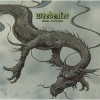 The guys in Weedeater don't have a use for virtuosic solos, blastbeats, tormented wails, or any of traditional heavy metal's idiosyncrasies. Frankly, they sound far too zoned out to care—or at least, I imagine they'd like us to think so, given an album title that winks at opiate use and the tar-black, sludgy riffs that coat their follow-up to 2007's God Luck and Good Speed.
The guys in Weedeater don't have a use for virtuosic solos, blastbeats, tormented wails, or any of traditional heavy metal's idiosyncrasies. Frankly, they sound far too zoned out to care—or at least, I imagine they'd like us to think so, given an album title that winks at opiate use and the tar-black, sludgy riffs that coat their follow-up to 2007's God Luck and Good Speed.
Jason... the Dragon is too slow to headbang to, too song-based to zone out to, too abrasive (mostly) to sing along to. Like Saint Vitus and Cathedral before them (among many others), Weedeater's specialty is overdriven, fuzz-coated rhythmic riffs and a lockstep, hard-hitting rhythm section. The band plays not as separate musicians, but a single, titanic entity; when they settle into a groove, as on the one-two opening punch of "Hammerhandle" and "Mancoon," Weedeater sound like a force of nature, satisfyingly heavy and visceral. Frontman "Dixie" Dave Collins' throat-shredding vocals are not so much anguished as sneering and provocative, if occasionally a bit silly when they can be understood.
Weedeater's music is as much an exercise in heavy rock as metal, so who better to sit at the mixing board than Steve Albini? He produced their last Southern Lord album, God Luck and Good Speed, four years ago, so while it's perhaps a case of not fixing what isn't broken, it's a great decision regardless: Jason... the Dragon sounds punchy, primitive and unhinged. It has the same recorded-live-in-the-studio feel that Albini captured for the Jesus Lizard's Liar 20 years ago, but with buckets of rumbling low-end in the mix—thick and sludgy bass that anchors the songs and amplifies Weedeater's attack.
Two songs stand out as major departures: "Palms and Opium" is a shock, trading distortion and sludge for back-porch country twang—a fitting soundtrack not for burning crosses, but roasting marshmallows over a campfire. While that song works in context, a mid-album respite from the surrounding heaviness and devastation, closer "Whiskey Creek" isn't as successful. Croaking frogs, rainwater washing down a gutter, and a single-note bass throb provide a disjointed backdrop for an instrumental banjo piece. One false ending later, a solo barroom piano closes the album in puzzling fashion. "Whiskey Creek" sounds like Weedeater had fun fucking around in the studio between actual songs, but I wish the album closed with a stronger statement.
My biggest complaint with Jason... the Dragon, though, is that it's over far too quickly. While I certainly don't mind albums that avoid filler and stay short and sweet, Jason is more akin to an EP in disguise. It's easy enough to do the math: one intro, one interlude, and two experimental (i.e., non-metal) songs on a ten-track album means there's a scant 22 minutes of crushing goodness here. It has been four years since Weedeater put out a full-length, so I can't help but feel disappointed that Jason is over so quickly. Here's hoping that their next album feels more substantive, especially if they nod off for another few years before recording again.
Samples:
Read More
- Administrator
- Albums and Singles
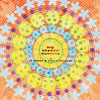 In contrast to the way I felt about their last collaboration, Space Finale, Big Shadow Montana is a dynamic, ever changing composition that mixes random sounds, droning electronics, and even some actual, albeit odd, passages of music into a perfect soundtrack for a '60s exploitation flick that never existed.
In contrast to the way I felt about their last collaboration, Space Finale, Big Shadow Montana is a dynamic, ever changing composition that mixes random sounds, droning electronics, and even some actual, albeit odd, passages of music into a perfect soundtrack for a '60s exploitation flick that never existed.
A single piece split over two halves of vinyl, each actually functions on their own, but feel best played as a whole.The A side opens with gentle, pensive drones that expand with a sense of nostalgia, through faded photographs and lingering dust.Occasionally, melodies of another time seem to be carried in by icy winds, as are ghostly passages of lost radio transmissions.Looped basses and clattering wind chimes appear as a more forceful, dominating element in the slow, dream sequence like passages.
Through this, the occasional odd bit of voice appears, along with some pretty notes and odd creaking noises amid the huge walls of heavy ambience that are broken up by what sounds like expansive harmonium.As the half ends, the constantly evolving and flowing sound ends on some truly bizarre waltzing Casio keyboard sounds.
On the flip side, the music is more spacy, psychedelic, and a bit playful.Modular synths and weathered textures abound, forcefully over some subtle melodies.Overall there’s a more restrained, chilled out sound, even in the open canyons of sound, with the occasional outburst of radio transmissions and what sounds like passing UFOs.
The absurdity goes on to even greater heights, where the Casio sounds reappear in an outright bit of lounge music, which has the right level of kitsch to be fun and not obnoxious.All the while the sonic debris from this bit of pure oddness are processed and effected into completely weird, but brilliant passages of sound.
With almost mournful, icy sounds on one half and weird, absurd science fiction vibes on the other, it makes for an odd combination, but one that really flows beautifully together.Compared to the sprawling Space Finale, Big Shadow Montana is a more concise document that is both fascinatingly complex and bizarrely fun at the same time, a pairing that just sadly does not come along often enough.
samples:
 
Read More
- Administrator
- Albums and Singles
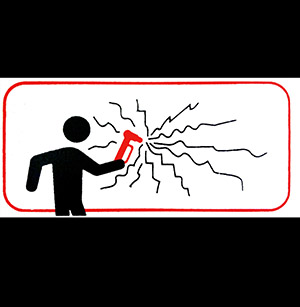 The three movements of Untitled #360 stand out distinctly in Francisco López’s recent body of work, largely due to their sheer sense of force and chaos. With scant information as far as source material goes, my best guess is that he plundered sound effects libraries, especially those aimed at action and horror film productions, to construct this lengthy composition. Rather than radically processing these sources, he instead focuses on layering and arranging them (with tasteful amounts of treatment) to create a tense, audio-only pseudo-narrative that is among the most aggressive and harsh that I have heard from him.
The three movements of Untitled #360 stand out distinctly in Francisco López’s recent body of work, largely due to their sheer sense of force and chaos. With scant information as far as source material goes, my best guess is that he plundered sound effects libraries, especially those aimed at action and horror film productions, to construct this lengthy composition. Rather than radically processing these sources, he instead focuses on layering and arranging them (with tasteful amounts of treatment) to create a tense, audio-only pseudo-narrative that is among the most aggressive and harsh that I have heard from him.
The first movement is the most traditionally collage style in nature.Crashes, explosions and chaos are all about, peppered with gunshots and the occasional music cue or two.The sound never relents, with López layering sound atop sound, with a bit more in the way of playback speed and direction adjustments.Panned all around, it is a disorienting mass of noise.While other sections on the album seem to hint at a narrative structure, this is the disc’s frenzied, messy inception.
Bookended by the two shorter, less varied works, the centerpiece of Untitled #360 is the 54 minute "Movement Two."Comparably, there is much more space and breathing room here, and also a bit calmer.Opening with the sounds of water, López brings in knocking and banging sound effects, but never overwhelmingly so.Crackling indistinct sounds and hydraulic machinery noises give a literal industrial atmosphere to the piece, though later offset by recordings of heartbeats that almost approximate some semblance of rhythm and a hint of humanity.
Francisco López almost brings about a sense of melody with some droning electronic atmospheres, but those are brief and passing.Soon, he takes the piece takes in a darker direction, bringing a mass of violent, fleshy thuds and squirming, wet sounds the forefront.At this point López has apparently locked into the "tension" tagged sounds in his effects library, because he hits all the ones that could be expected:ticking clocks, heavy breathing, and monstrous growls (or something of that nature).The jarring outbursts, offset with hissing air and the occasionally random scraping noise, culminates in a dark, tense, and unsettling conclusion to the section.
It is the third and final movement where it seems as if the unspoken narrative is clearest, and also the most visceral.A dense mix of sound effects cannot obscure the explosions, crashing, and crunching sounds he stacks throughout the mix.A wide array of automatic weapon fire can be heard from all distances, punctuated with car alarms and the occasional passing helicopter.It is much akin to a protracted, dramatic film shoot out scene, a la Michael Mann's Heat, but with all music cues and dialog stripped away, rendering it even more inhuman and purely violent.Spread out over 13 minutes and with the drastic volume shifts, it is a jarring, harrowing experience with a siren here, followed by a disturbingly loud burst of submachine gun fire.The closing minutes in which everything takes on a submerged, aquatic, quality, complete with sonar pings, labored breathing, and the hissing of an oxygen tank further demonstrate how López could end up with some Hollywood sound design credits to his name.
I never know what to expect when listening to a new Francisco López work because, as prolific as he may be, he is always doing something new and it never is disappointing.I was not quite prepared for the harshness and often terrifying narrative he constructs in Untitled #360, so the first listen was a mix of baffling and frightening.However, like all of his work, it is diverse and complex and, while not necessarily the most comfortable of listening, is always a fascinating experience.
samples:
 
Read More
- Administrator
- Albums and Singles
 This limited EP collects four brand new remixes and reinterpretations of songs on 2010's album Rocket Fire. Justin K. Broadrick (Godflesh, Jesu, Pale Sketcher) takes sources from "It's Too Late" and reinvents the melodies, GD Luxxe records a German pop version of "Someday," Monster Movie (Slowdive, Eternal) perform a very sympathetic cover of "Stars Fall," and Jessica Bailiff creates a terrifying reconstruction of "Never Make You Cry" from samples and her own playing and singing.
This limited EP collects four brand new remixes and reinterpretations of songs on 2010's album Rocket Fire. Justin K. Broadrick (Godflesh, Jesu, Pale Sketcher) takes sources from "It's Too Late" and reinvents the melodies, GD Luxxe records a German pop version of "Someday," Monster Movie (Slowdive, Eternal) perform a very sympathetic cover of "Stars Fall," and Jessica Bailiff creates a terrifying reconstruction of "Never Make You Cry" from samples and her own playing and singing.
Only 500 copies will be sold through Brainwashed. It is available now for purchase in the Brainwashed Store. Songs are available below:
Read More
- Administrator
- Albums and Singles
 This second release from the recently reawakened Dead Can Dance is quite a delightful surprise, radically departing from its uneven predecessor and displaying a striking degree of creative reinvigoration. Rather than another stab at recreating classic DCD fare like Aion, Dionysus is a conceptually rich and structurally inventive plunge deep into the folklore and spirit of Dionysian rituals and festivals. An intriguing concept does not necessarily lead to an intriguing album, of course, but Dionysus finds Dead Can Dance at the peak of their instrumental powers, unfolding as feast of wonderfully vibrant rhythms, esoteric instrumentation, and inspired arrangements. It is quite a remarkable and improbable achievement, as it sounds very little like prime Dead Can Dance, yet absolutely feels like prime Dead Can Dance. If Dionysus had come out in the band’s golden age of the late '80s and early '90s, there would most certainly be a small but devoted contingent of fans that viewed it as dark horse contender for the duo's finest album.
This second release from the recently reawakened Dead Can Dance is quite a delightful surprise, radically departing from its uneven predecessor and displaying a striking degree of creative reinvigoration. Rather than another stab at recreating classic DCD fare like Aion, Dionysus is a conceptually rich and structurally inventive plunge deep into the folklore and spirit of Dionysian rituals and festivals. An intriguing concept does not necessarily lead to an intriguing album, of course, but Dionysus finds Dead Can Dance at the peak of their instrumental powers, unfolding as feast of wonderfully vibrant rhythms, esoteric instrumentation, and inspired arrangements. It is quite a remarkable and improbable achievement, as it sounds very little like prime Dead Can Dance, yet absolutely feels like prime Dead Can Dance. If Dionysus had come out in the band’s golden age of the late '80s and early '90s, there would most certainly be a small but devoted contingent of fans that viewed it as dark horse contender for the duo's finest album.
If I am being completely honest, I truly did not expect Dead Can Dance to ever record another great album, as the feeling I got from the reunion tour and Anastasis was that Brendan Perry and Lisa Gerrard are now far more like two loosely entwined solo artists who periodically collaborate than they are a united creative force these days.For the most part, Dionysus does little to dispel that sense, but it definitely seems like the duo have found a way to flourish within those conditions.Based on all that I have read about this album, it is quite clear that Perry was the album's driving force and that it was a labor of love birthed from a deep fascination with how pagan/Dionysian beliefs have spread, transformed, lingered, and evolved in the wake of the Roman Empire.Perry was originally drawn to the theme by European spring and harvest festivals, but the reach of the album seamlessly dissolves boundaries in culture, time, and space like only Dead Can Dance can do.For example, Perry's field recordings alone touch upon South America, New Zealand, and Switzerland and his musical inspirations are even more widespread, delving into traditional instrumentation that spans just about the entire globe.While there some wonderfully exotic and otherworldly sounds occasionally appear, such as the eerily flute-like see-sawing tones and jungle-like chirps in the closing "Psychopomp," that unusual instrumentation is less of a focus than it is a set of specialized tools that Perry used to get exactly the feel he wanted.In fact, Dionysus is largely a very percussion-driven affair, an approach that is especially effective on the muscular and propulsively off-kilter opener "Sea Borne," which abstractly evokes Dionysus's mythical arrival from The East.
While the album's bookends are both quite strong and easy to identify, the delineation between individual pieces on Dionysus is quite a purposely blurry one, as the album is structured as a two-part oratorio with different movements that tie to different aspects of Dionysian myth and folklore.For example, "Dance of the Bacchantes" is inspired by a rite in which women "abandoned their domestic duties for trance-like processions and dances," while "Liberator of Minds" celebrates hallucinogens and "The Forest" is a "call to abandon worldly and material pursuits and return to a primeval enlightened state of being."Happily, Perry opted to keep the narrative arc an abstract and impressionistic one, so this concept album deftly eludes the perils of dubious lyrical content or exposition.Curiously, it does sound like Perry is singing actual words in some language in the two closing movements, but the language is a fictional one, as Perry wanted to "convey emotion beyond the boundaries of language itself."In lesser hands, such a conceit would likely end in disaster.In this case, however, it not only flows seamlessly but seems like a crucial part of establishing the timeless and ritualistic headspace that the album inhabits.Recognizable words would have killed the spell.The music is not quite as liberated from the constraints of existing culture, however, as Perry is quite fond of Middle Eastern scales and melodies.The overall feeling is not entirely Middle Eastern though, as some medieval-sounding touches certainly bleed in, as do some sounds that seem plucked from real or imaginary tribes hidden deep in the heart of a tropical rainforest.At Dionysus's best, all of those threads combine into something that resembles an alternately raucous, sensuous, and ritualistic village dance that pulses with visceral rhythms, call-and-response chants, and primal eruptions of ululating yelps.
Admittedly, tt feels a bit weird to love a Dead Can Dance album in which Lisa Gerrard plays a noticeably reduced role, as she only takes over lead vocals on "The Invocation" (I think). However, her voice continually surfaces throughout the album as an added choral layer or to echo or harmonize with Perry's own vocals.That might not sound like much, yet her essence pervades the proceedings in a deeper way, as Dionysus bears little resemblance to Perry's solo work.This simply is not a vocal-centric album in the traditional Dead Can Dance sense, nor does the mood quite suit Gerrard's hammered dulcimer talents and the duo have the good sense not to awkwardly shoehorn in touches that do not belong.In fact, Perry and Gerrard show an almost supernatural instinct for avoiding false notes or missteps, favorably calling to mind a time in the distant past (The Serpent's Egg) when they seemed like an absolutely infallible force of nature and each new album felt like a communion with something deeper and more meaningful than anything the present era offered.There is not a weak moment to be found here, as my sole caveat is that the album feels all too brief at a mere 35 minutes.None of that time is squandered at all though, so it is hard to grumble: if the perfect arc is just over half an hour, then that is the proper length for the album to be.I had hoped that Perry and Gerrard might have some more classic songs or a return to form lurking in their shared future, but Dionysus has easily transcended those modest expectations by feeling like the beginning of an extremely promising second act to their long and illustrious career.Nostalgia and welcome familiarity are great, but reclaiming relevance and forging into compelling and unique new territory is far better.
Read More
- Administrator
- Albums and Singles
Long-time Coil collaborator Danny Hyde is excited to offer the world the next instalment in
his ongoing series of projects, the "Svay Pak", from his solo endeavour, Aural Rage.
This release is a departure from many of his better known appearances on Coil tracks such
as Stolen and Contaminated, Loves Secret Domain, and Backlight District, and contains a
suite of 5 songs, each quirky in its own way yet with a focus on melody and more
conventional song structure.
The tracks were inspired by interesting experiences I have had in the last few years and
sometimes features appearances by the street people and random wanderers I have met in
those journeys.
The vocalists on this release range from random street beggars, to up and coming popular
musicians who may someday be at the top of the charts.
Where these varied vocalists destinies lie is for those who purchase one of these cds,
limited to 150 numbered copies to decide.
Hyde, always the "odd man out" when it comes to music releases, will be adorning the face
of each cd with its own, unique art, ranging from the tasteful to the utterly tasteless, from
paintings by members of Hydes family to photoshopped pornography or the pictures of the
deranged scrawling of teenage internet vandals with only pictures of the southern united
state and Microsoft paint to vent their absurd fury.
Each purchaser of this limited release will get to choose which art best suits his or her own
temperament, so hurry and get yours today before someone of similar mindset does. The cd
is available for pre-order now, and some of the artwork can be seen at http://www.auralrage.com/svaypakpics.htm
and....some of the artwork has yet to be decided on, and each purchaser will offered to tell
Danny's what their favourite 3 pieces are, so the remaining artworks may become stranger
and more deranged than those already made. One of those pieces could be yours if you
order now. Some of the art already made reflects the tastes and aesthetic proclivities of
previous purchasers, so what direction the remaining cds art take is anyone’s guess, but if
you see one you like, or your feeling brave and want to hear some compellingly quirky
tunes, make your order now"
Read More
- Administrator
- Albums and Singles
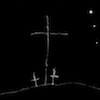 Considering this new album has arrived so soon after David Tibet had finished his Aleph trilogy, it is not a shock to find that it essentially continues from where Baalstorm, Sing Omega left off. However, where Baalstorm, Sing Omega was vibrant and colorful like a decadent religious feast bathed in sunlight, Honeysuckle Æons is a night album; the yawn of a night sky speckled with stars and celestial bodies. The rock excess has dissipated and in its place Tibet returns to the introspective poet last encountered on Soft Black Stars and Sleep Has His House.
Considering this new album has arrived so soon after David Tibet had finished his Aleph trilogy, it is not a shock to find that it essentially continues from where Baalstorm, Sing Omega left off. However, where Baalstorm, Sing Omega was vibrant and colorful like a decadent religious feast bathed in sunlight, Honeysuckle Æons is a night album; the yawn of a night sky speckled with stars and celestial bodies. The rock excess has dissipated and in its place Tibet returns to the introspective poet last encountered on Soft Black Stars and Sleep Has His House.
This introspection is not restricted to Tibet, the sprawling cast that was Current 93 of recent years has been reduced to a handful of players. Baby Dee returns to the piano stool, her playing poised somewhere between her usual music hall style and Maja Elliott’s raven-like playing on Soft Black Stars. As well as piano, Dee also plays some terrific organ on "Jasmine" and, on "Honeysuckle," she picks up on the carnival organ theme explored briefly on the last album (although with far less violence this time). Dee’s piano is paired with a mournful theremin, Armen Ra operating the ghostly synth with a control that is so often absent from the instrument. The theremin adds to the nocturnal atmosphere, there is something pitch black about its tone; it sounds like a gap between the stars.
Baalstorm’s African and Middle Eastern flavors are also reprised as Eliot Bates makes a return appearance, playing both melodies on the oud and percussion on the bendir and erbane. His gorgeous contributions are enhanced by the inclusion of the kalimba (played by Lisa Pizzighella). There is a split running through the songs on Honeysuckle Æons, roughly half of the songs based on the piano or organ and the rest centered on the oud. At first, it made Honeysuckle Æons feel fractured, like two different albums half made and half finished. Yet, as I listen to it again and again (and especially after dark), I realize it all works together perfectly. The organ and the traditional instruments link together like the different aspects of the faith explored by Tibet in his lyrics; the more modern rituals of Christianity linked back to the original ideas seeded in the Coptic texts that Tibet has taken such inspiration from. This linkage is helped by Andrew Liles' treatments of the music and words (subtle but there) and his job mixing the album; as disparate as the piano- and oud-based songs could be, he makes them feel like different sides of the same instrument.
Looking more closely at the lyrics, Tibet has taken the same ideas that ran through the Aleph trilogy but condenses them into an even more apocryphal and apocalyptic tale. Yet where there was drama and excitement in the Aleph trilogy, here he brings it back down to a personal and spiritual oblivion ("Stripped back to the real me"). His singing reflects the music’s gentle but insistent push; the screaming and the shouting have given way to realization and acceptance. That is not to say that the eschatological leaning of Tibet’s words is gone, the album is peppered with these references (everything from the "Bloodface" of Black Ships Ate the Sky to allusions to Milton’s Paradise Lost). Now these references seem to be almost psychological, not the actual Armageddon of this world but of Tibet’s world.
This more sedate and solemn version of Current 93 makes sense in the context of the year that was for Tibet. Change in the form of death, both Sebastian Horsley and Peter Christopherson’s passing left their mark on Tibet, and in the form of a new beginning as he embarks on a new phase of his academic career in Coptic studies. Events like these make you take account of your life in their own way and Tibet has put these feelings into Honeysuckle Æons rather than a diary. Like Sleep Has His House was a requiem for his father, Honeysuckle Æons is a goodbye to lost friends and a hello to the future.
samples:
 
Read More
- Administrator
- Albums and Singles
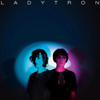 While the term electroclash came in and out of style almost instantaneously, only a small number of the groups lumped together under that umbrella had the ability to continue on past one or two albums. Ladytron have since proven their ability to create brilliant hooks and infectious songs (as evidenced on this collection) long after many of their contemporaries of 1999 and 2000 dissolved.
While the term electroclash came in and out of style almost instantaneously, only a small number of the groups lumped together under that umbrella had the ability to continue on past one or two albums. Ladytron have since proven their ability to create brilliant hooks and infectious songs (as evidenced on this collection) long after many of their contemporaries of 1999 and 2000 dissolved.
The album plays like a concert, songs are not in any chronological order but sound like a set list, with a strong opener, some valleys, peaks, and a strong closing. Additionally, the curator managed to squeeze as many songs as possible into the space allowed on the conventional compact disc. Best of 00-10 is available in both a single and double CD set as well as for digital download, which is beneficial for those of us who don't want to throw down the money to buy the same songs all over again.
The songs on disc one (or the standard release) are strategically chosen, opening with their massive "Destroy Everything You Touch" from 2005's Witching Hour and ending with two brand new recordings, a knockout shocker of a cover of Death In June's "Little Black Angel" (mad props from the Brainwashed crew!) and the new song and single "Ace of Hz." Disc two, while less essential, has plenty of other strong favorites like Velocifero opener "Black Cat," "Mu-Tron," from 604, and the adorably sweet ballad "All the Way," from Witching Hour in addition to the rare instrumental noisy Light & Magic bonus track "USA vs White Noise," which could easily be a tribute to their once contemporary (and equally nerdy) Add N to (X).
In 2000 Ladytron was all over the college radio airwaves with songs like "Playgirl," "He Took Her To a Movie," and "Discotraxx" from 604, which wasn't as much of a debut album as it was a collection of music recorded between 1997 and 2000. I'm disappointed that this collection neglects the single and fiercely popular track "He Took Her To a Movie," (probably because it sounds quite dated by now) as well as the brief but rare lead ditty on their Japanese only EP, Miss Black and Her Friends, "Miss Black." It also avoids the catchy tune "Sugar," which was a strong single and had a great music video to go along with it.
The versions of songs like "Seventeen" and the incredible "Runaway" are the original full-length LP versions, so whoever compiled the collection didn't seek the more concise "radio edit" single versions of the songs. While this is acceptable, it makes this a rather lazy "best of," as nobody made the effort to consider that fans don't want to buy the same versions they already own and new listeners can latch on easier to a version that is more direct and to-the-point. While Ladytron have mastered the riff, they do have a tendency to overplay it a few too many times and wear out their welcome, especially on "Deep Blue" and the aforementioned "Seventeen."
To be honest, this set reeks of a record label who bought the rights to their back catalog, freshly eager to reissue each original album, as it sounds more like a sampler than a true hits or singles album. It's a decent introduction for a new listener who showed up to their concert and wanted to leave with only 1 item that best represented their concert experience, however any true fan will realize the sloppiness of the package. Even though the deluxe version comes with an 80-page booklet of photos and such I would much more prefer disc two to have been a DVD compilation of all their music videos, however, as there's no true quintessential show-stoppers on disc two.
samples:
Read More
- Administrator
- Albums and Singles
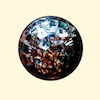 There have been few albums that I remember waiting so impatiently for. Several years have gone by since Clodagh Simonds' first transmission under the Fovea Hex umbrella and finally a full length has appeared. Continuing on from an exceptional string of EPs and singles, Here is Where We Used to Sing finds Simonds and her ever shifting group exploring different aspects of their songwriting process. With more focused lyrics and more defined melodies, their music has solidified and began to sprout sharp, beautiful forms like crystals grown in a petri dish: equally perfect and fragile.
There have been few albums that I remember waiting so impatiently for. Several years have gone by since Clodagh Simonds' first transmission under the Fovea Hex umbrella and finally a full length has appeared. Continuing on from an exceptional string of EPs and singles, Here is Where We Used to Sing finds Simonds and her ever shifting group exploring different aspects of their songwriting process. With more focused lyrics and more defined melodies, their music has solidified and began to sprout sharp, beautiful forms like crystals grown in a petri dish: equally perfect and fragile.
After waiting so long for a full album from Fovea Hex, I must admit I had some trepidations about Here is Where We Used to Sing. What made the three EPs that made up Neither Speak Nor Remain Silent was their blend of song craft and a loose, magical slipping of the sounds through the cracks in the melodies. The same alchemy did not seem to permeate Here is Where We Used to Sing to the same extent; the main album is very much anchored to the piano and the more experimental sequences are saved for the bonus disc, Three Beams. Initially, I was perturbed by this segregation of what I felt to be Fovea Hex's defining feature but the more I listen to the album, the more I fall in love with it. The shifts and wobbles are still there but they are subtler now, a deeper engagement with the music is needed.
It is not just the music that has a poetic depth to it, the renaissance of mysticism in Ireland in the early 20th century by the likes of W.B. Yeats and Æ finds a descendant in Simonds' words (both now and throughout her career). Simonds' lyrics at once capture the ordinary in all its vivid realism and also the layers on top of this normality that fill out a dull scene into an astonishing and beautiful epiphany. A fitting example being these lines sung by Laura Sheeran on "Falling Things (Where Does a Girl Begin?)":
"You might recall some sunny day this other day of falling things
Raising your face… And then I might fall calling your name as I'm streaming by."
The music and the words come together as a powerful concoction, soporific and hypnogogic. This is particularly true of the album’s stunning centerpiece, "A Hymn to Sulphur," which marries Simonds and Sheeran's sea-drenched vocals with a tidal rhythm of e-bowed guitar, strings, and piano. An intermittent piano pulse played on the higher notes sounds like a submarine's sonar, completing the oceanic setting. On the violin and cello respectively, Cora Venus Lunny and Julia play with a power and grace that illuminates the other elements of the song, highlighting and accentuating the vocals in particular.
The remainder of Here is Where We Used to Sing is no less sublime. Short instrumental pieces punctuate the album and Michael Begg and Colin Potter both help create these little tableaus (as well as adding to the main songs), their touch apparent but not heavy. Their contributions involve blurring the boundaries within the music; instruments seep into each other and form new, striking shapes. Other previous Fovea Hex collaborators reappear throughout the album, Brian Eno and Fabrizio Palumbo both being particularly noteworthy for their ethereal electronics and guitar respectively.
Begg, Potter, and William Basinski rework the recordings on the Three Beams disc and all three come up with startling results. Both Begg and Basinski create haunting, abstract soundworks out of the raw materials. Begg takes the strings and turns them into shooting stars, it feels like the notes are hurtling past my ears. On the other hand, Basinski's treatment of the music sounds more like glass birds in a giant, reverberating aviary. However, it is Potter's contribution that captivates me entirely. Moving on an arc through the album's rich ingredients, he is the only one of the three to use the vocals as a central point in his own composition. Potter's construction of the music gives the whole piece a bell-like character; he picks up on the music's resonances and expands the songs into vast stretches of glorious space. When Simonds and Sheeran call out through the ether, it feels like a bolt of lightning from God.
While I never expected to be disappointed with Here is Where We Used to Sing, I also never expected it to confound my expectations to this degree. I feel like I still have only scratched the surface of this work; like the Neither Speak Nor Remain Silent EPs, this is an album that will keep revealing secrets with every listen.
samples:
- A Hymn to Sulphur
- Still Unseen
- Cup of Joy (Colin Potter)
 
Read More
